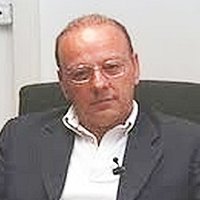A case of resistant hypercalcemia in a peritoneal dialysis patient with underlying Vitamin A toxicosis
Published on: 7th October, 2021
OCLC Number/Unique Identifier: 9305374138
Hypercalcemia in End Stage Renal Disease on Dialysis, is a frustrating complication for both medical staff and patients, and it may lead to vascular calcification, Calciphylaxis, and even aggravating cardiovascular disease, even in the absence of risk factors which can lead to early death [1], and correcting Hypercalcemia even in the absence of hyperphosphatemia is out most important to improve co-morbid conditions and reduce mortality, most common causes in end stage renal disease, includes high calcium dialysis bath, high dietary intake of Calcium rich food, exogenous intake of calcium products, or excessive intake of Vitamin D, underlying Sarcoidosis, rare causes need to be explored in resistant cases, including Vitamin A toxicosis, as being presented in this case.
Effect of chitosan and silicon oxide treatments on postharvest Valencia Late (Citrus × sinensis) fruits
Published on: 6th October, 2021
OCLC Number/Unique Identifier: 9305369016
The efficacy of chitosan and silicon oxide to prevent postharvest weight loss and fungi infection in 'Valencia Late' oranges was tested. Three silicon oxide concentrations (0.1%, 0.2%, 1%) were applied as preharvest treatments. Chitosan treatments were performed at the same concentrations in postharvest fruit. Preharvest applications were carried out by tractor spraying, while fruit were submerged for 30 seconds in baths with the chitosan concentrations in the postharvest applications. In both cases, a positive control (water treatment) and negative control (fungicide) were included. Treated fruit were stored in a chamber to simulate commercial storage conditions (4 ºC, 90% RH) for 9 weeks. After this time, the weight loss and damage caused by fungi due to natural infection were evaluated. Both silicon oxide and chitosan applications were effective in controlling natural infection by Penicillium species but had no positive effect on weight loss.
Effects of melatonin on liver and lung tissues of animals with bile duct ligation-induced hepatopulmonary syndrome
Published on: 13th October, 2021
OCLC Number/Unique Identifier: 9305372985
The objective was to assess the antioxidant effect of melatonin (MLT) on liver and lung tissues of animals with bile duct ligation (BDL)-induced hepato-pulmonary syndrome (HPS). A model of BDL-induced biliary cirrhosis was used in male Wistar rats. Results suggest that MLT has an antioxidant effect on liver and lung tissues in animals with BDL-induced HPS by higher activity of antioxidant enzymes in the group HPS treated with MLT and the histological analysis of lung parenchyma showing decreased damage in this same group, including other analysis described below.
COVID-19 and rhino-orbital mucormycosis – a case report
Published on: 5th October, 2021
OCLC Number/Unique Identifier: 9305369698
There is a constant rise in cases of rhino-orbital mucormycosis in people with Coronavirus disease 2019 (COVID-19). Generally, Mucormycosis develops in immunosuppression or debilitating diseases. In cases having head and neck involvement, the mold enters the respiratory tract with further involvement of nose and sinuses and there is consecutive progression into orbital and intracranial structures. Diabetes Mellitus (DM) is an independent risk factor for both severe COVID-19 and mucormycosis. The clinical examination and direct smears are helpful for early diagnosis of the disease and timely intervention. For the better prevention and management of such opportunistic infections in COVID-19 patients, it is prudent to establish prophylactic treatment protocols along with rational use of corticosteroids. We here report a case of Rhino-orbital Mucormycosis infection caused by Rhizopus oryzae in a COVID-19 patient with Diabetes Mellitus.
Observation of telepsychiatry service in a teaching hospital of eastern Nepal during COVID-19 pandemic
Published on: 14th October, 2021
OCLC Number/Unique Identifier: 9305376438
Considering the geographical complexity and adversity, online communication and consultation are viable method in Nepal. The COVID-19 pandemic has accelerated the already starting trend of use of these technologies in medicine. In BPKIHS, telemedicine efforts were already initiated; lockdown rather warranted its maximum use. Here is an account of the observation made in telepsychiatry service provided by a consultant psychiatrist of its department of psychiatry. It is an institute-based observation noted for all the telepsychiatry consultations in 9 random duty days of the COVID-19 pandemic. Basic necessary information was noted down in a semi-structured proforma, like: socio-demographic, clinical information and advice provided. There were 104 subjects; 73 follow-up and 31 new: 60 male and 44 female cases. Clients of multi-ethnic groups were the most from urban, then semi-urban and least from rural areas. More consultations were for young age-groups and from nearby districts of Sunsari. Mood, somatic (sleep), anxiety were the top presenting complaints and 8/104 clients had suicidal symptoms. Maximum follow-up cases were improving. The most common diagnoses were: Mood (Depression and Bipolar), Anxiety, Psychosis and Substance use disorders. Most common treatment advices included: Antidepressants, Antipsychotics, Benzodiazepines and Counseling/psycho-education. Telepsychiatry is a viable method of delivering service even during the pandemic.
Descriptive study to assess the knowledge on risk factors of Coronary Artery Disease (CAD)
Published on: 30th September, 2021
OCLC Number/Unique Identifier: 9278266118
CAD is the most common type of CVD which is characterized by deposits of lipids within the intima of the coronary artery. CAD is the leading cause of mortality and morbidity in many countries worldwide. The investigators adopted a quantitative approach to assess the knowledge on risk factors of CAD among patients in selected OPDs of M.O.S.C Medical College Hospital, Kolenchery. A descriptive design with non-probability convenience sampling technique was used. 120 clients who have given consent and shown willingness to participate were enrolled in the study. Data was collected by using demographic proforma, and structured knowledge questionnaireThe data was analyzed using descriptive and inferential statistics. The collected data was organized tabulated and analyzed by descriptive [mean, median, mode and standard deviation] and inferential statistics [chi-square test].The data revealed that the level of knowledge on risk factors of cad among subjects attending selected OPDs, out of 120 samples 30 (25%) have good knowledge, 85 (71%) have average knowledge and only 5 (4%) have poor knowledge. There was significant association between knowledge level and education whereas there was no significant association between age, sex, religion, income, marital status, occupation and food habit.
Challenge of polymers for biosimilar products packaging
Published on: 29th September, 2021
OCLC Number/Unique Identifier: 9278291018
Presently Packaging plays a significant role for Biosimilar product. The process of selecting materials and the type of packaging also offers an opportunity for the Packaging scientist to look for new biological delivery choices. Most injectable protein products were supplied in some sort of glass vial, prefilled syringe, and cartridge. Those product having high Ph content there is a chance of “delamination “from inner surface of glass vial. With protein-based drugs, the biggest issue is the effect of packaging derivatives on the protein’s three-dimensional and surface structure. These are any effects that relate to denaturation or aggregation of the protein due to oxidation or interactions from contaminants or impurities in the preparation. The potential for these effects needs to be carefully considered in choosing the container and the container closure system to avoid putting patients in jeopardy.
Using the DFConhecimento instrument to assess Congolese healthcare professionals’ knowledge on sickle cell disease
Published on: 29th September, 2021
OCLC Number/Unique Identifier: 9278289343
Introduction: Despite advances in the management of sickle cell disease (SCD), gaps still exist in the knowledge of healthcare professionals (HCPs) about the disease. The objective of this study was to assess the knowledge of HCPs about SCD.
Methods: This is a cross-sectional study involving 465 HCPs (physicians and nurses) who responded to the DFConhecimento instrument questionnaire. Performance was tested in terms of average score and proportion of correct response for each questionnaire item topic.
Results: The average score for respondents was 4.6 ± 1.9 out of a total of 13 points. Proportions of professionals who responded well were greater than 58% in three topics (Neonatal screening program, Sickle cell conditions, and Sickle cell anemia genotype). In the other topics, rates of good response ranged from 11.6% to 46.0%. There was a statistical association between best performance and medical title: physicians were more knowledgeable than nurses (OR = 6.26; 95% CI: 2.69-14.56).
Conclusion: This study highlighted that knowledge of SCD among HCPs is very inadequate. This lack of sufficient information on SCD from HCPs indicates the need to develop continuing education programs.
A Short communication on Pichia pastoris vs. E. coli: Efficient expression system
Published on: 29th September, 2021
OCLC Number/Unique Identifier: 9278269516
One of the major challenges for vaccine producing companies is having favourable conditions for efficient expression system for living organisms in order to produce biologicals. Several companies across the globe looking for several alternative sources for better yield through efficient expression based system.
Neurosciences and dynamical system theory: some short remarks
Published on: 24th September, 2021
OCLC Number/Unique Identifier: 9278288957
This very brief communication is aimed to highlight some recent contact points between neurosciences and dynamical system theory, passing through paleoneurology, with some remarks suggesting further possible interdisciplinary developments.




